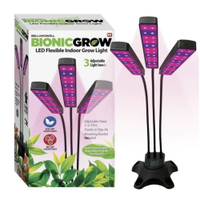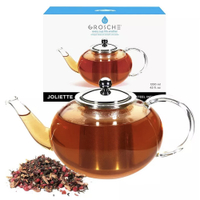How to plant an indoor herbal tea garden – for the freshest infusions
Herbal tea experts share their sage advice on the best home-grown varieties

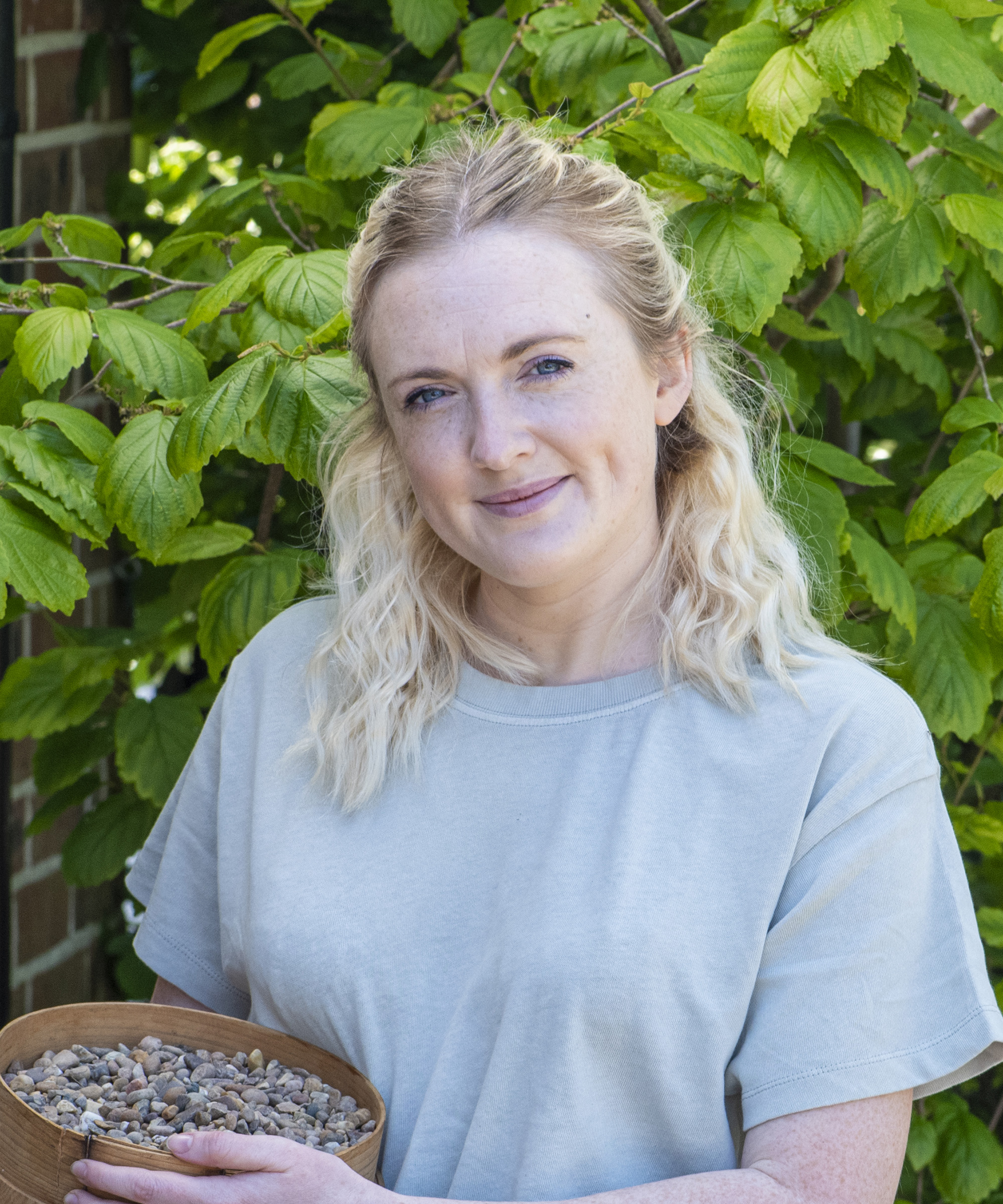
Herbs make such rewarding plants, whether you grow them out in the backyard or indoors in pots. Most are easy to grow, have aromatic and ornamental properties, and they're edible.
If you're searching for new indoor garden ideas and you enjoy a relaxing cup of herbal tea, then why not combine the two by cultivating an indoor herb garden comprised of the best plants for herbal tea.
'I love using fresh and dried herbs as relaxing herbal infusions or adding them to some of my favourite teas. By combining different ingredients, you can layer in a variety of flavors and benefits,' says Nadia De La Vega of Davidstea.
'When creating your own herbal blends, or infusing straight herbs, my recommendation is to focus on what you are looking for in terms of experience and benefit: do you prefer a hot tea or are you looking for an iced tea?
'Are you seeking a digestion-friendly beverage or a more calming, sleepy time infusion?'
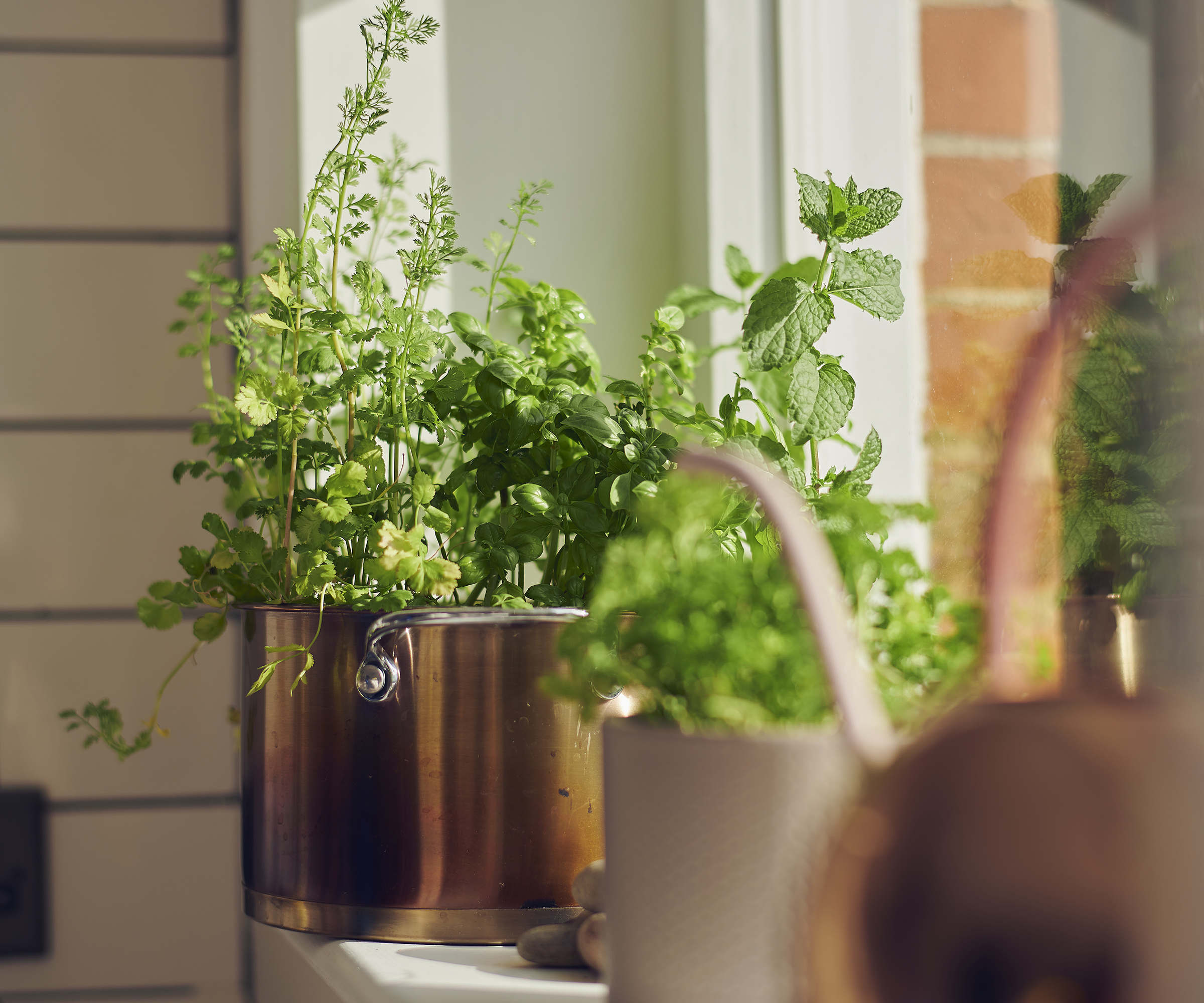
Indoor herbs requite plenty of sun

Nadia De La Vega is the Director of Tea Sustainability at DAVIDsTEA’s. She is an expert on the benefits of drinking tea and the different herbs and plants used.
6 of the best herbs to grow your own herbal tea
Herbal tea can have many benefits, aside from its refreshing taste. But before you start growing your own indoor herb garden, Tanya Anderson of Lovely Greens has the following safety advice:
'Never use a plant medicinally unless you are sure of what it can do. If you have an underlying health issue or are pregnant, breastfeeding or taking other medication, please speak to your physician before self-administering.'
‘Always practice care when trying new plants as food or in herbalism. If you have any doubts about the identity of the plants you are planning to use to make tea, it is best not to consume them.'

Tanya Anderson is an author, teacher, and YouTube personality passionate about organic gardening and soapmaking. She shares a simple green-living ethos with a focus on how growing a garden can bring resilience and connection to the natural world.
1. Chamomile

'Chamomile is a great tea to take at bedtime to help your body wind down for the day,' says Daniel Powers, Founder of The Botanical Institute.
'A 2018 study showed chamomile to be particularly effective in helping with mental health, as it seems to help with relaxing the mind. Additionally, a study in 2017 found that it also helps to support increased sleep quality,' he says.
'This is an easy plant to grow from seed,' says gardens writer Fiona Cumberpatch. 'Opt for German or Roman chamomile varieties. In spring, fill a pot with multi-purpose compost. Sprinkle in a thin layer of seeds, and cover them with half an inch of compost,' she says.
You can plant your seedlings out in the backyard about a foot apart in a sunny spot. If chamomile is going to be part of an indoor growing system you'll need to keep the soil constantly moist, and the pot should be in a bright spot which receives at least six hours of good sunlight a day.
'Chamomile is my personal favorite tea to drink, it has a great floral flavor. If you steep for a longer amount of time, the tea will have a bitter flavor, which was traditionally used to help improve digestion,' says Daniel.
To make chamomile tea: 'For each cup of water, you’ll need a tablespoon of dried chamomile or two tablespoons of fresh,' says Tanya Anderson.
'Place the chamomile in a teapot, pour scalding water over it, and steep for only five minutes. The dosage guide for adults is three cups per day, but if you’re over 70, drink half of that,' she says.

Daniel has a master's degree in herbal medicine. As well as being founder of The Botanical Institute Daniel lives and works on a farm where he grows all sorts of herbs.
2. Sage
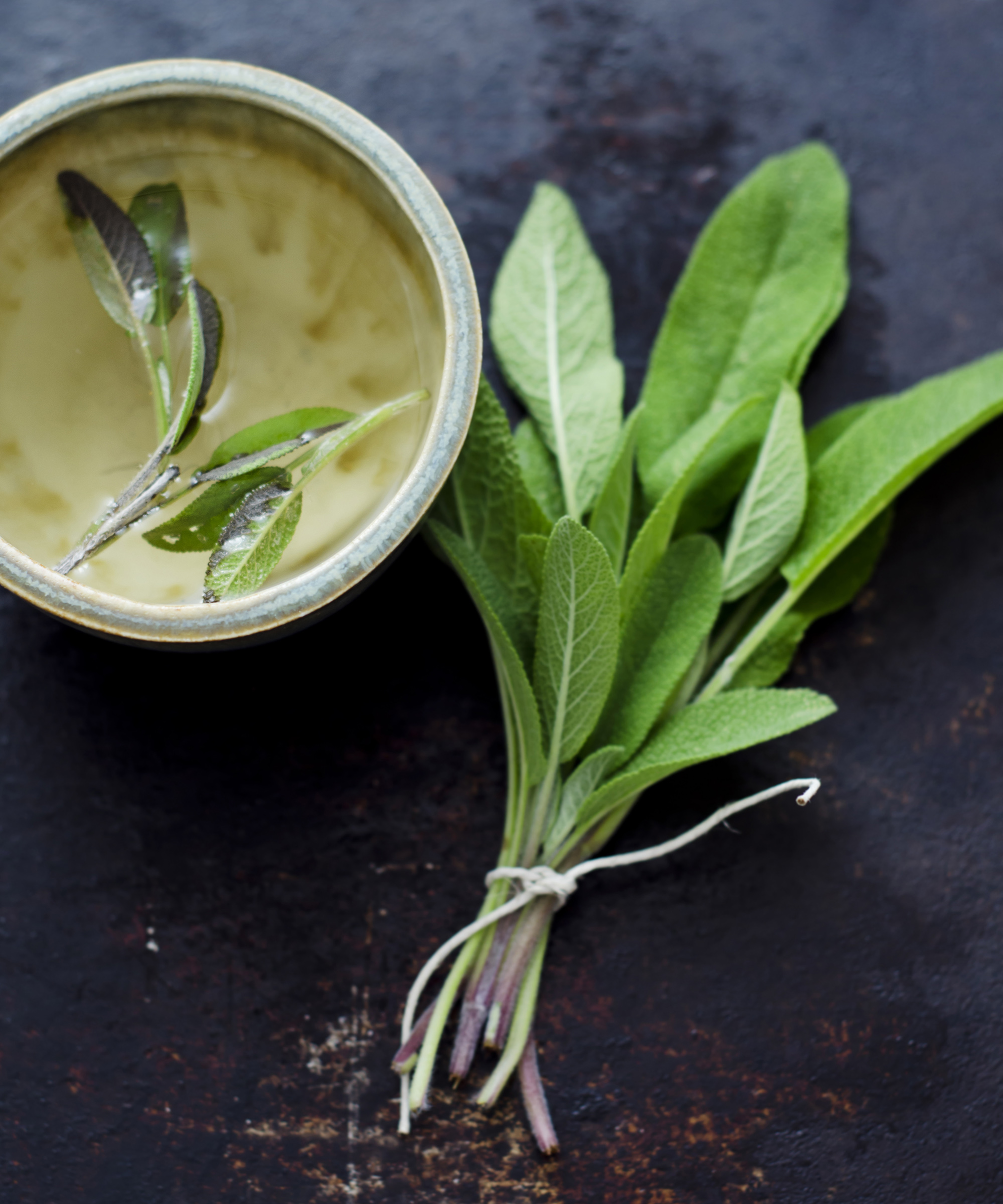
An evergreen Mediterranean herb, sage can be grown indoors, but mistakes to avoid when growing herbs like sage indoors is to ensure they get plenty of light. Sage needs a really sunny spot and to be kept warm, at 70°F. If you can't guarantee lots of light you might need to give it a boost with an artificial grow light.
'It likes good drainage, so is best planted in a terracotta pot and allow it to dry out between waterings,' says gardening expert Geraldine Sweeney.
As a tea Herbaceous with earthy and woodsy notes, sage is loved for its cleansing and digestion-soothing properties.
Not only does sage make a delicious herbal tea, it may also provide a variety of health benefits Daniel Powers tells us. 'A study by Yi & Wetzstein in 2010 shows that sage has been found to have high total polyphenolic content and strong antioxidant capacities, which may be useful as anti-inflammatory agents.'
'The herb is also known for its cognitive benefits, as demonstrated in a study where sage extract showed significant improvement in short-term memory (Edwards et al., 2021),' says Daniel.
Sage tea can be made from fresh or dried leave. 'Pinch off the leaves or snip some sprigs with sharp scissors. For a fresh brew, place two tablespoons of leaves in a cup and cover with boiling water,' says Fiona Cumberpatch.
'To dry, hang sprigs upside down in a cool place for about two weeks. Crumble into an airtight jar and seal until ready to use.'
If you're struggling with getting enough light levels inside to give your indoor herbs what they need then consider a grow light like this one.

Geraldine is a gardener and garden writer, who has worked for over 12 years in historic public gardens and private gardens around London.
3. Bay
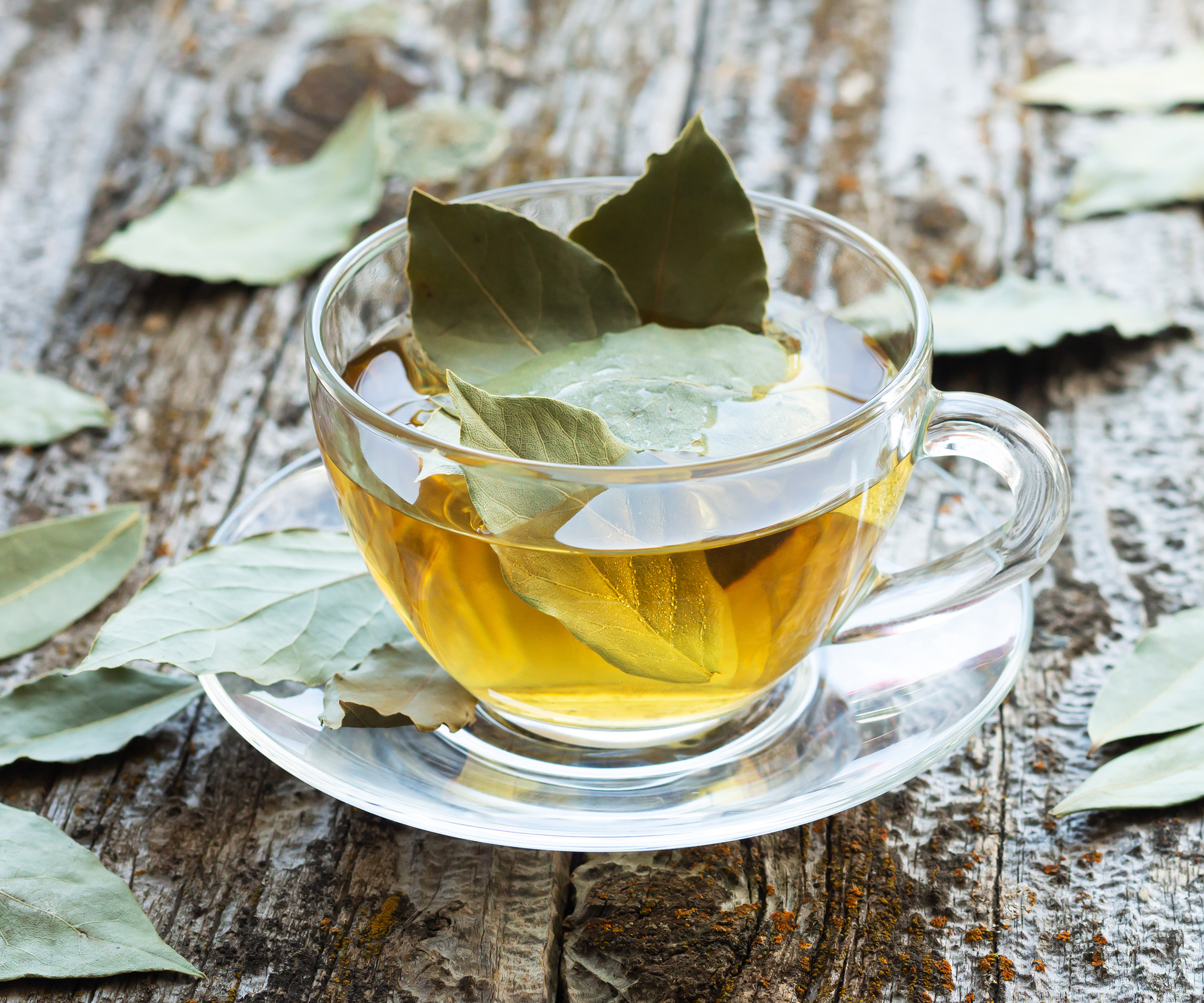
'Bay is slightly tender in an outdoor pot, so will love being inside over winter,' says Geraldine Sweeney.
'It makes a large plant, so won’t fit on a windowsill. Keep it in its own pot and have it as a statement indoor plant. When growing herbs indoors it’s best kept in a sunny spot with good ventilation. Mist the leaves frequently and watch out for pests like scale insect,' she says.
To make bay leaf tea put two or three bay leaves into a mug and pour over boiling water. 'Steep for about five minutes before removing. For extra aromatic flavor, add a cinnamon stick,' says Fiona Cumberpatch.
A teapot with an infuser is an essential element of brewing herbal tea blends.

An experienced freelance journalist, editor and columnist writing for national magazines and websites, Fiona now specialises in gardens. She enjoys finding and writing about all kinds, from the tiniest town plots to impressively designed ones in grand country houses
4. Mint
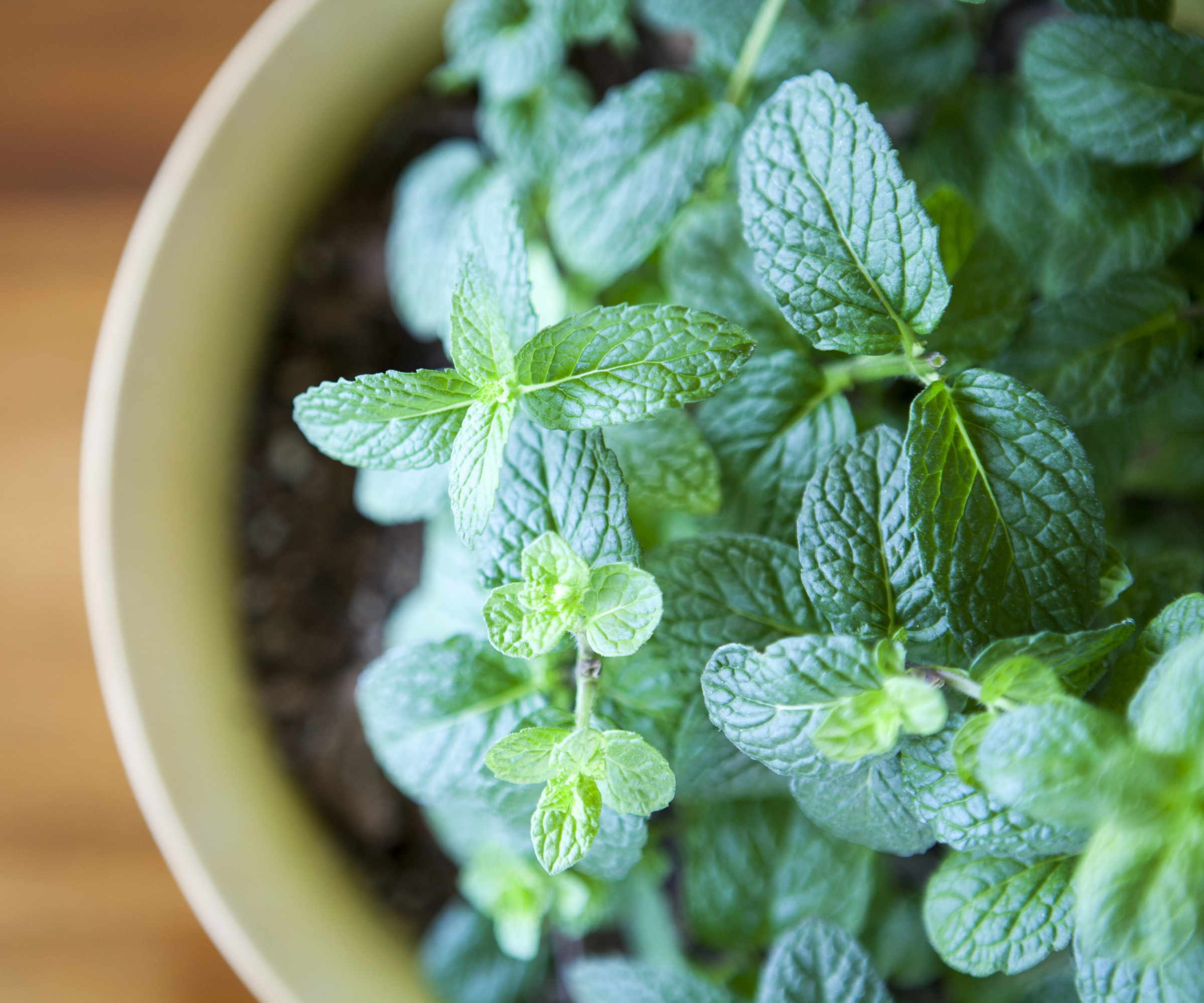
'When it comes to how to make your own herbal tea, mint is one of the easiest herbs to grow and it makes a classic herbal tea. Mint aids digestion and can reduce symptoms of nausea too,' says Fiona Cumberpatch.
Unlike many herbs, when you grow mint indoors it likes a rich, moist soil, but keep it at 65-70°F. And watch out for mint because it's a rampant grower. It will spread , quickly enveloping any other herbs. So give it its own large pot, and avoid planting it with other herbs.
There are hundreds of different varieties of mint, including chocolate mint and pineapple mint, but the two main ones are peppermint and spearmint. Peppermint is excellent for making tea, as it has a 40 per cent menthol content, producing an intense, punchy flavour when steeped in water.
When you harvest mint the tea is so easy to brew. 'Cut a handful of fresh leaves and place in a teapot or mug. Fill with boiling water and allow to stand. It can be sweetened to taste with sugar or honey,' says Fiona Cumberpatch.
5. Lemon verbena
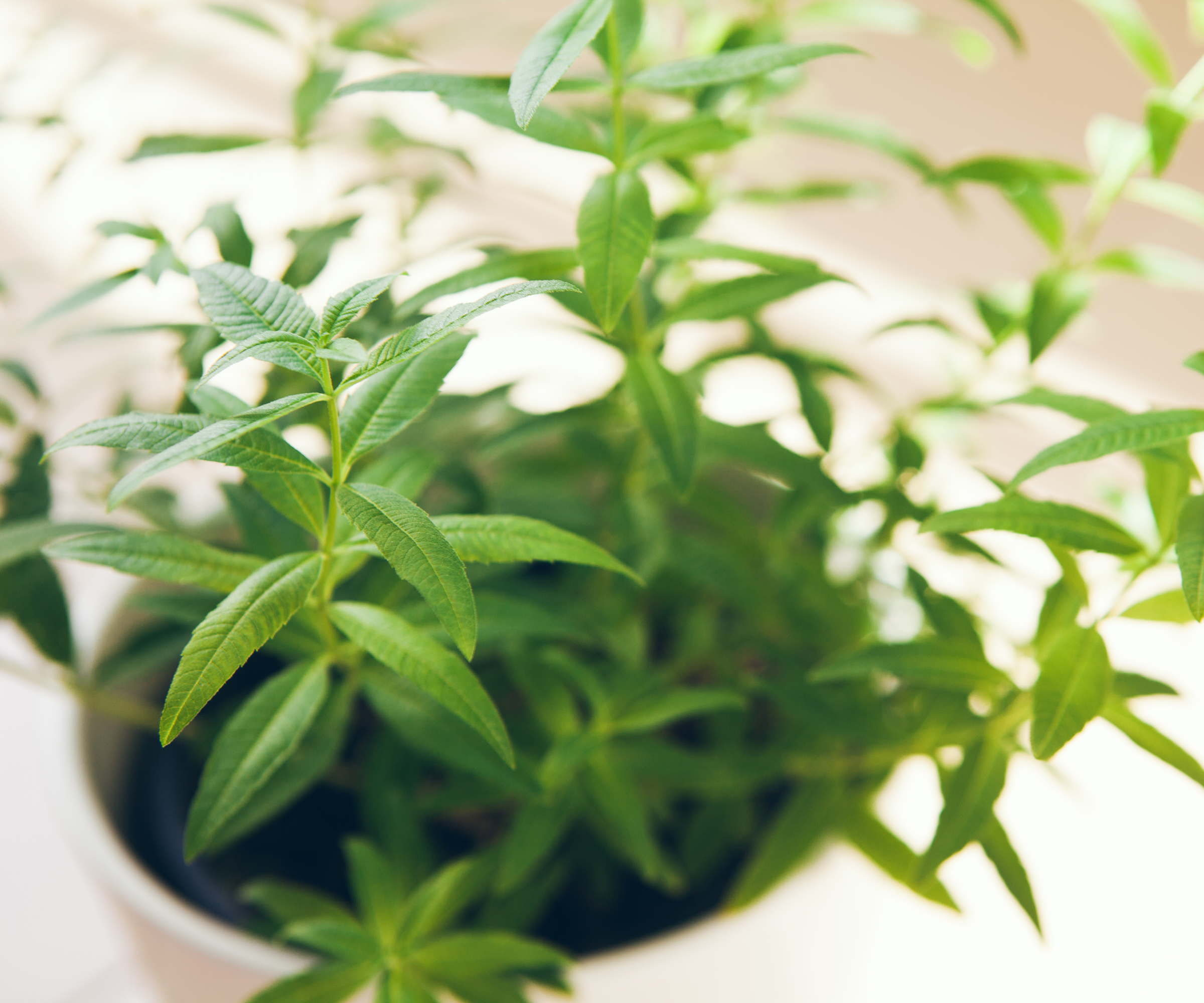
'Lemon verbena is an attractive aromatic herb which is easily grown from cuttings, making it an excellent plant for value. The fact that it's not completely hardy making it perfect for a pot indoors,' says Geraldine Sweeney.
'Plant herbs somewhere sunny and where you can brush past them As this is how it releases wafts of the zingy scent. Lemon verbena makes a refreshing herbal tea.'
'It grows up to 7ft in gardens, so snip back the stems to restrict growth if you’re short of space indoors. Keep it ventilated and mist frequently to guard against red spider mite,' says Geraldine.
6. Hibiscus

Growing hibiscus as a houseplant is possible providing it is kept away from drafts. It can't tolerate temperatures below 50°F. Keep them in the sunniest spot you can find indoors.
'A refreshing tart, berry-like flavour, hibiscus is enjoyed as an agua fresca in Mexico, and combined with spices in Jamaica. It’s also traditionally combined with rosehips for a cold-soothing tonic,' says Nadia de la Vega.
'Try it iced with cane sugar, or hot with ginger and all-spice,' she says. The flowers should be steeped in hot water until infused.
FAQs
How to dry herbs for tea
'For perennial herb plants (which die back in winter), drying them in summer means that you can ensure a continuous supply of tea through the cold months,' says Fiona Cumberpatch, garden writer.
'Pick the flowers or leaves in the late morning, when the dew has dried. Place them on a drying rack or hang them up in an airing cupboard for a couple of weeks. When the herbs feel brittle to touch, store in a clean, airtight jar until ready to use.'
How to harvest herbs for tea
'As a general rule for how to grow your own herbal tea, leaves which get the most sunlight have the best flavor, as they have the highest concentration of aromatic oil,' says garden writer Fiona Cumberpatch.
'Choose firm leaves with no blemishes, and snip them off with sharp scissors. Ripping or crushing leaves can subtly change the flavor. If using the leaves of a plant for tea, aim to do so before they flower, as once a plant has bloomed, the foliage may taste bitter.'
By now you've seen that growing your own doesn't have to be limited to allotments and vegetable patches. Why not have a look at edible seeds you can grow for an ornamental kitchen garden.
Sign up to the Homes & Gardens newsletter
Design expertise in your inbox – from inspiring decorating ideas and beautiful celebrity homes to practical gardening advice and shopping round-ups.

Teresa was part of a team that launched Easy Gardens magazine two years ago and edited it for some time. Teresa has been a Gardens Editor at Homes & Gardens, Country Homes & Interiors and Living Etc magazine since 2020 and has developed close working relationships with top garden designers, and has been exposed to an array of rich garden content and expertise.
-
 Plants never to grow next to fruit trees
Plants never to grow next to fruit treesExpert advice on which plants to keep away from fruit trees to encourage a healthy harvest
By Jacky Parker Published
-
 Martha Stewart's tips for arranging daffodils are unbelievably simple and effective – it's the only flower advice you need this springtime
Martha Stewart's tips for arranging daffodils are unbelievably simple and effective – it's the only flower advice you need this springtimeMartha shows us that we can create gorgeous bouquets of this seasonal flower by simply trimming the stems and placing them in specific vases
By Hannah Ziegler Published
